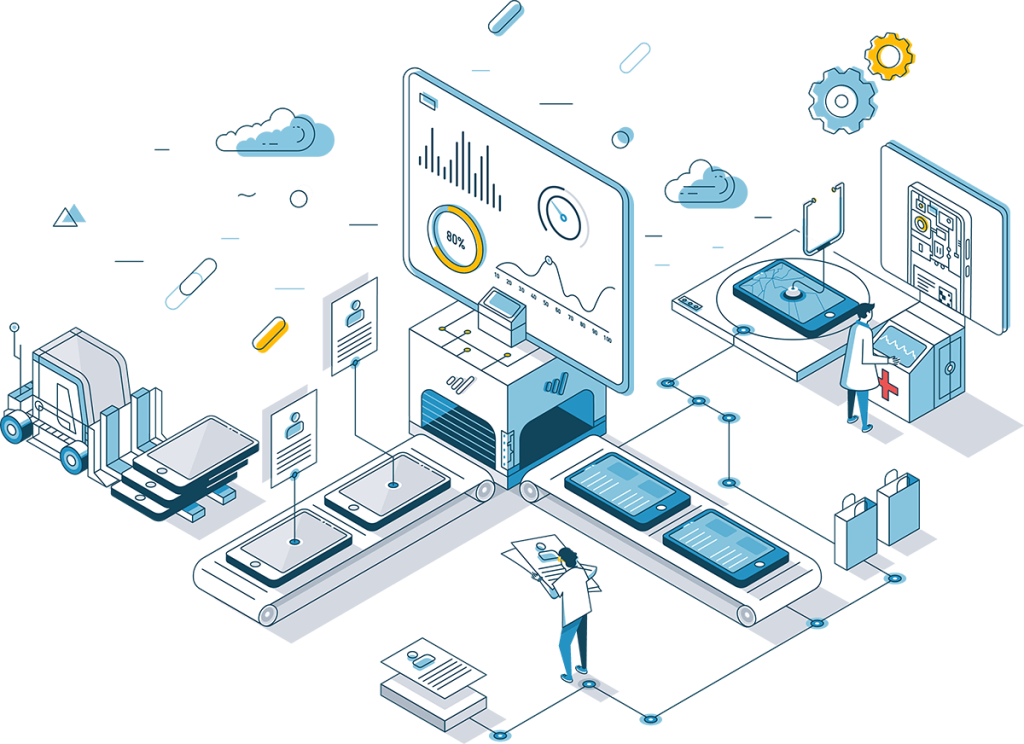In the rapidly changing workplace, the way we handle and manage devices has experienced an important change. As the world shifts to hybrid and remote work arrangements, the conventional method of distributing laptops within the workplace has now been replaced with an increasingly complex operational process known as Device Lifecycle Management (DLM). Managed Desktop Service is a vital element of this shift. It aids organizations to streamline processes, improve the experience of end users and ultimately contribute to increased productivity.

Device Lifecycle Management, often referred to as DLM, encompasses the entire journey of a device from acquisition to retirement. This includes purchasing of the device, maintenance and provisioning along with end-of-life disposal. DLM was once quite simple to implement when performed in a traditional office environment. However, the advent of remote working has added new levels of complexity.
In this new world, IT managers find themselves struggling with issues of asset management and logistics at every stage of a device’s lifecycle. This is mainly driven by the desire to cater for the various needs of remote workers and hybrid employees. It’s now imperative for businesses to use effective solutions. Managed Desktop Service is one of the most popular.
Managed Desktop Service Remote work enabler
Managed Desktop Services, or MDS is a comprehensive management solution that streamlines the management of devices used by end users. This service offers a holistic method of provisioning, maintaining and assisting devices, which makes it a vital instrument for IT managers. Managed Desktop Service can help businesses overcome the issues associated with remote work.
Enhancing the User Experience One of the main objectives of Managed Desktop Service is to improve the user experience. It tackles common problems that remote workers confront issues like poor repairs, slow setting up equipment, or lengthy software updates. MDS boosts productivity and satisfaction by ensuring employees have the tools and resources needed to be able to access.
Managed Desktop Service streamlines device provisioning for remote workers. With MDS organizations are able to efficiently provide laptops and other essential equipment to new hires to ensure they are equipped with the tools they require from the first day. This eliminates the frustration of employees waiting for their devices and having delays when they begin their job.
Managed Desktop Service allows IT teams to manage patches and software updates more effectively. It permits you to schedule updates in non-disruptive time slots, so that your employees aren’t interrupted while working on critical tasks. This reduces the likelihood of interruptions to employees during meetings or video calls.
Rapid Repairs or Replacements: For remote workplaces it is crucial to replace or repair malfunctioning devices as soon as possible. Managed Desktop Service providers have often developed robust support systems that make sure that employees are provided with prompt assistance if their devices experience issues. This not only minimizes downtime, but also lowers the threat of cyber-security threats caused by the use of personal or unsecure devices in times of emergency.
Cost efficiency: By outsourcing the management of devices used by users to a Managed Desktop service provider, companies are able to optimize their costs. This reduces the necessity to hire employees in-house to manage devices. It also reduces interruptions due to outdated equipment and increases the cost-effectiveness for device lifecycle management.
The Impact of Employee Engagement and Turnover
The efficiency and effectiveness of the lifecycle of a device is directly impacted by employee engagement. Employees who are unhappy with issues related to their device may lose interest and may look elsewhere for opportunities. Inefficient DLM has a major impact on the satisfaction of employees.
However, companies that invest in Managed Desktop Service (MDS) as well as an efficient Device Lifecycle Management can create an enjoyable and productive work environment. Employees who have access the right tools, experience less disruptions, and get prompt help when problems arise tend to stay with their current employer. This will reduce the rate of turnover among employees as well as the costs associated with recruiting and training.
Mitigating Cybersecurity Risks
Companies are placing cybersecurity as a top priority list in this period of remote work. If devices are not properly managed employees could end up using devices that are unsecure or personal, which can pose significant security risks for the company’s data and network security.
Many Managed Desktop Services providers have robust cybersecurity protocols in place. They are able to make sure that every device is up to date with the latest security patches and that the data is secured and encrypted. This proactive approach to cybersecurity helps organizations reduce risks and keep an environment that is secure for remote work.
Conclusion
As the work environment continues to evolve and change, the importance of effective Device Lifecycle Management and Managed Desktop Service cannot be overstated. These are vital services for organizations that want to adapt to the new hybrid and remote working. By focusing on improving the end-user experience, streamlining device provisioning and strengthening cybersecurity organisations can improve productivity, reduce turnover, and create a secure and productive work environment in the new age of work. Embracing these changes in the management of devices isn’t just a response to the new times. It’s a decision towards a more efficient and productive future.
